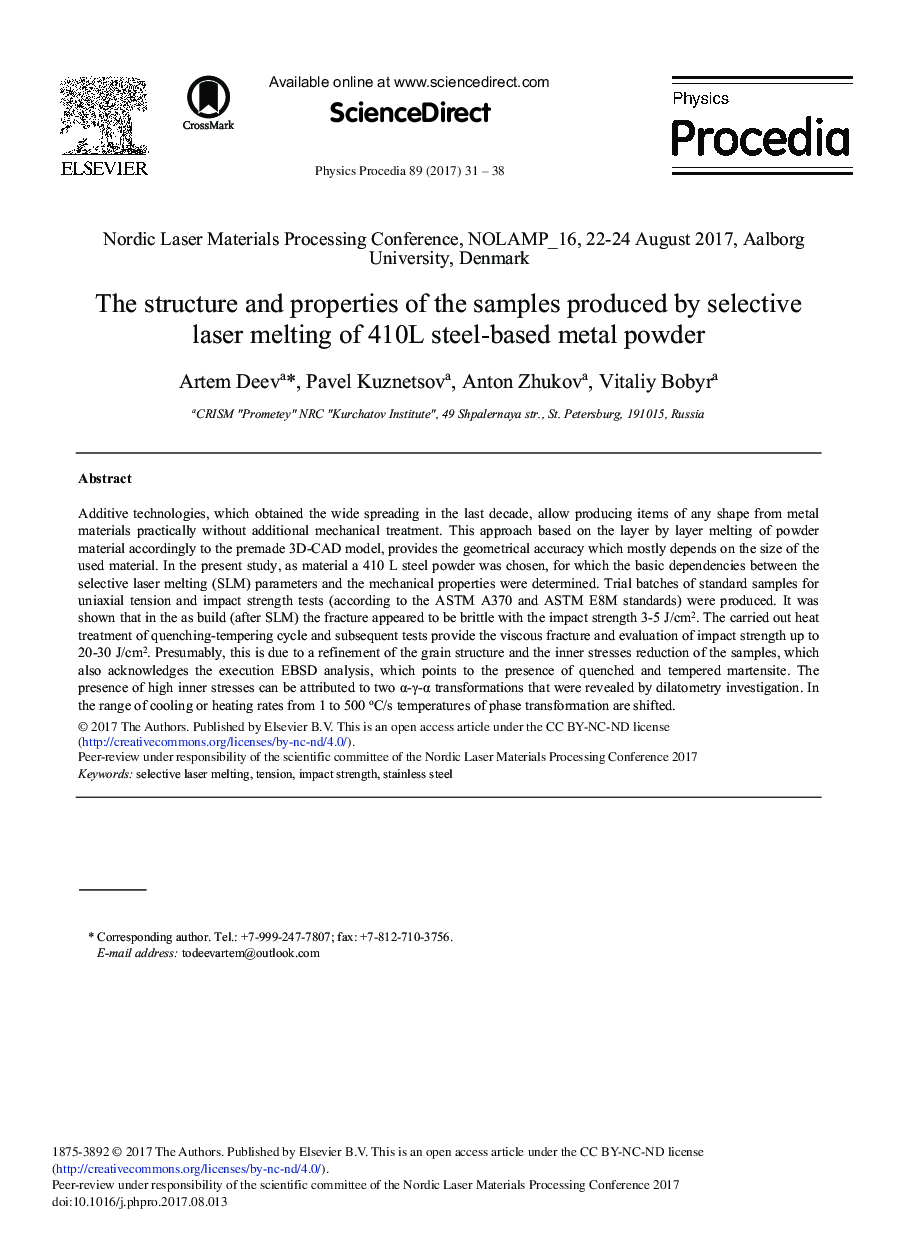| Article ID | Journal | Published Year | Pages | File Type |
|---|---|---|---|---|
| 5497086 | Physics Procedia | 2017 | 8 Pages |
Abstract
Additive technologies, which obtained the wide spreading in the last decade, allow producing items of any shape from metal materials practically without additional mechanical treatment. This approach based on the layer by layer melting of powder material accordingly to the premade 3D-CAD model, provides the geometrical accuracy which mostly depends on the size of the used material. In the present study, as material a 410 L steel powder was chosen, for which the basic dependencies between the selective laser melting (SLM) parameters and the mechanical properties were determined. Trial batches of standard samples for uniaxial tension and impact strength tests (according to the ASTM A370 and ASTM E8 M standards) were produced. It was shown that in the as build (after SLM) the fracture appeared to be brittle with the impact strength 3-5 J/cm2. The carried out heat treatment of quenching-tempering cycle and subsequent tests provide the viscous fracture and evaluation of impact strength up to 20-30 J/cm2. Presumably, this is due to a refinement of the grain structure and the inner stresses reduction of the samples, which also acknowledges the execution EBSD analysis, which points to the presence of quenched and tempered martensite. The presence of high inner stresses can be attributed to two α-γ-α transformations that were revealed by dilatometry investigation. In the range of cooling or heating rates from 1 to 500 °C/s temperatures of phase transformation are shifted.
Related Topics
Physical Sciences and Engineering
Physics and Astronomy
Physics and Astronomy (General)
Authors
Artem Deev, Pavel Kuznetsov, Anton Zhukov, Vitaliy Bobyr,
